Pictorial Trip Report - Lake Agnes in October
by Ho Ho

Thursday morning seemed a bit cooler than the day before, though still warm for early October, probably in the mid-40s. Once again, our "front porch" was a great place to sit and drink a couple mugs of coffee. This morning I used my PFD as a cushion to insulate against the frigid rock, and it worked really well -
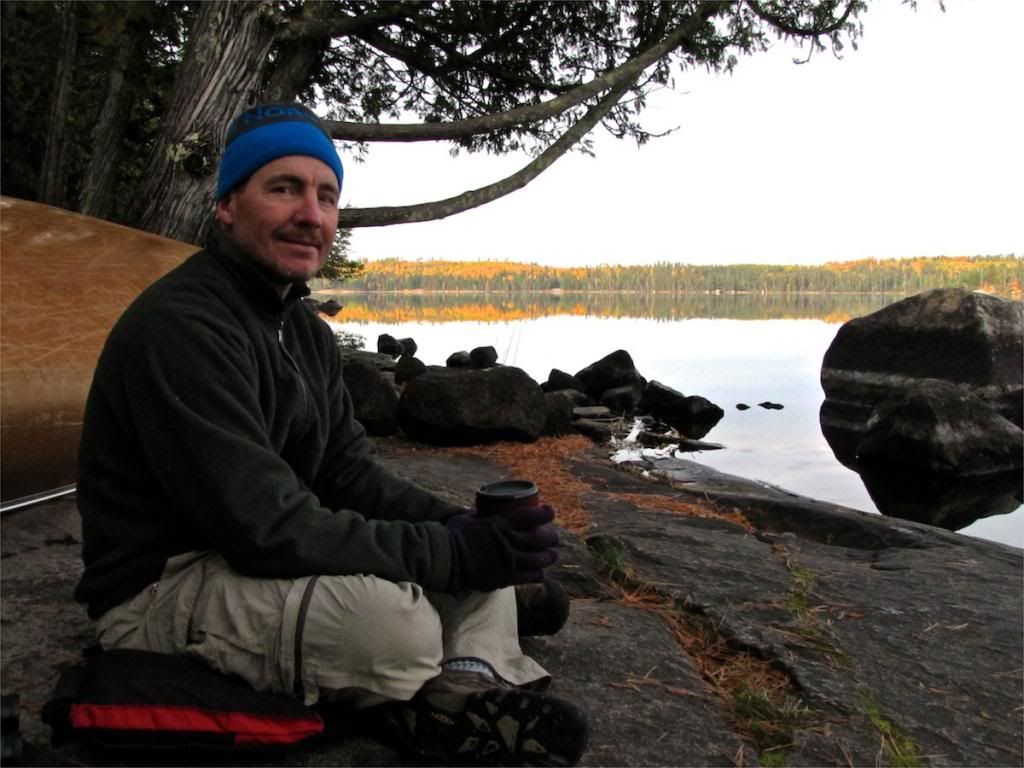
David took a few pictures around the campsite. Looking northeast from the front porch -
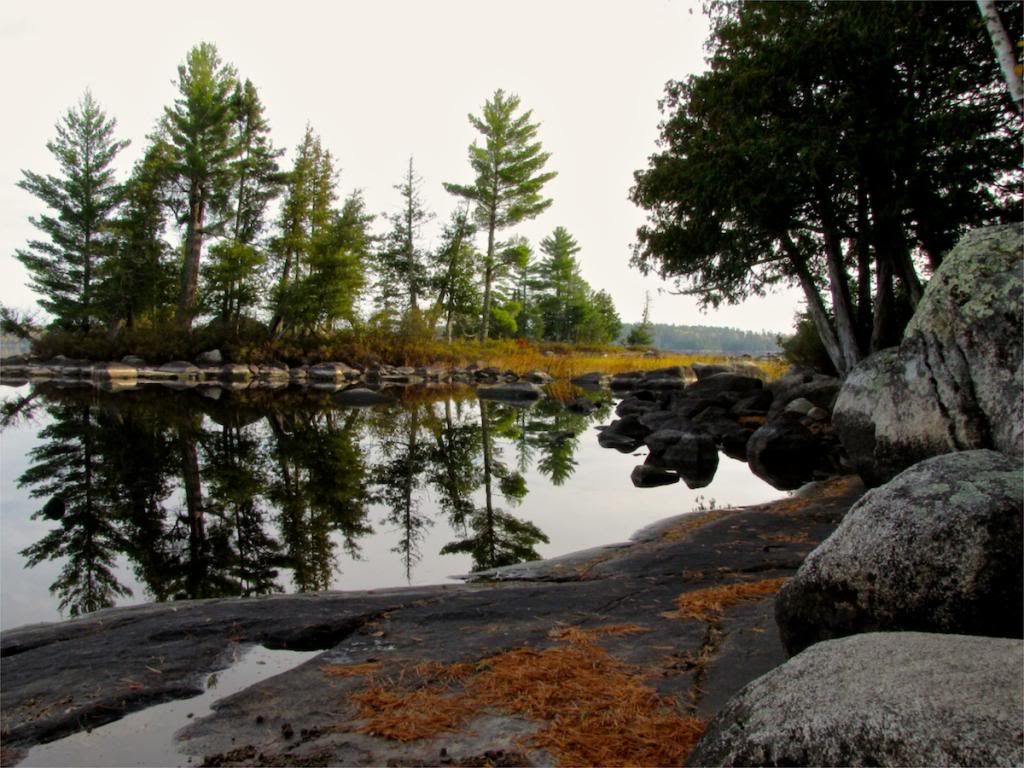
Back bay grasses -
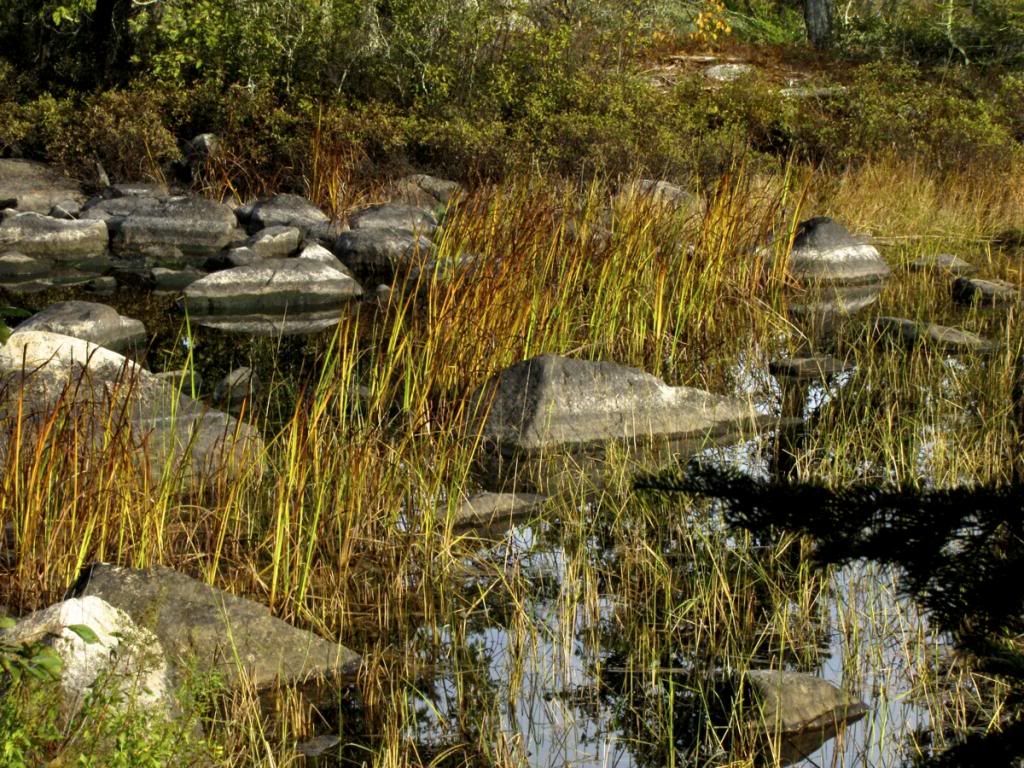
Northwest across the lake -

Our neighbors at the campsite to the west were out walking on their beach again in the early part of morning. But not long afterwards they packed up and paddled south up the river, presumably heading for home. Once they departed, we had Lake Agnes to ourselves.
Today we planned to explore Oyster Lake, and perhaps beyond. At one point we had thought about moving camp to Oyster. But with the short days, it was nice not having to take time to set up and break down camp. Besides, our Agnes site was truly excellent. So for this October getaway, we would stick with our basecamp, and just explore Oyster on a daytrip.
We left camp around 11:15, paddling toward a small gap in the trees on the western beach where I had watched one of our neighbors and his dog disappear the day before. That's where the portage was. As we neared the western shore, a thick cover of green algae appeared on the lake surface. This was the deepest green algae bloom we have ever seen on a Boundary Waters lake -

This photo is called "Reflections (Green on Green)" -
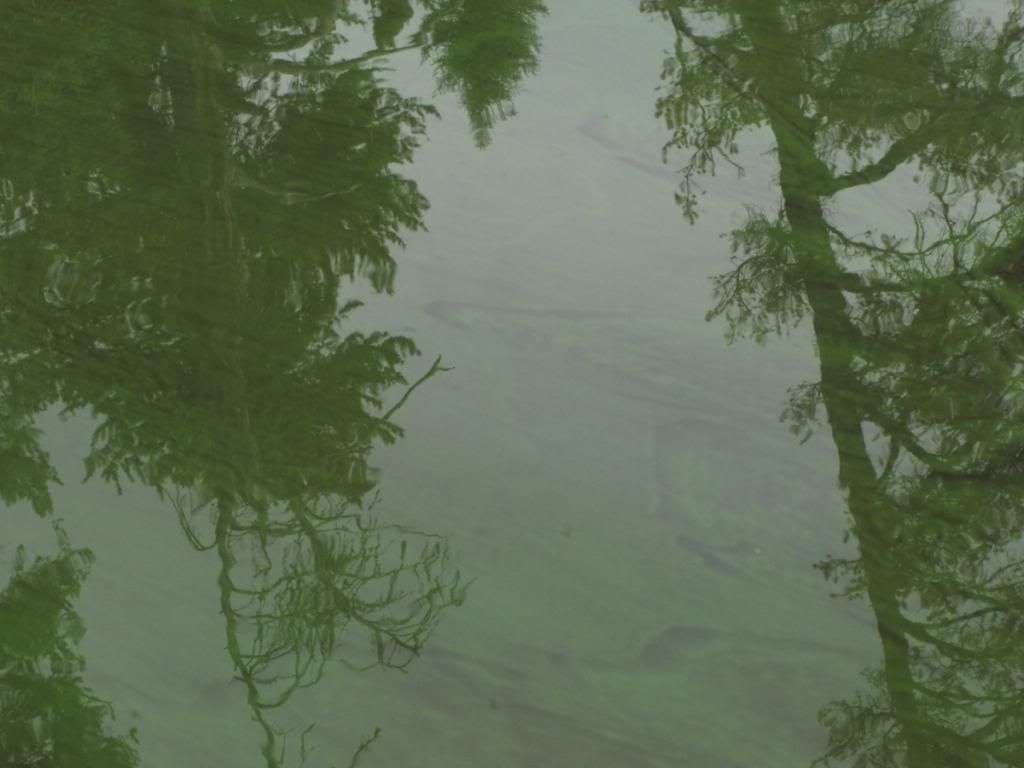
From the beach we followed the 2/3-mile portage up and over a ridge to the Oyster River. The put-in on the river was pretty mucky, but then we enjoyed our paddle up this marshy stream -

Oyster River shoreline -
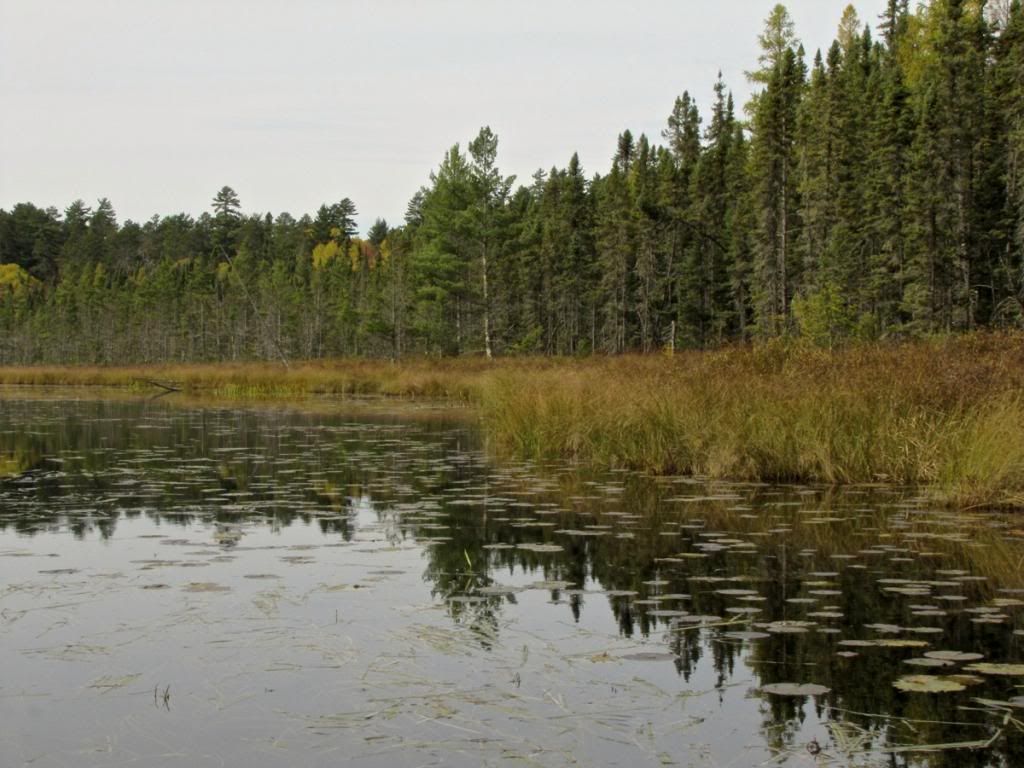
At the far end of the river, we crossed another, shorter portage, which led to Oyster Lake -
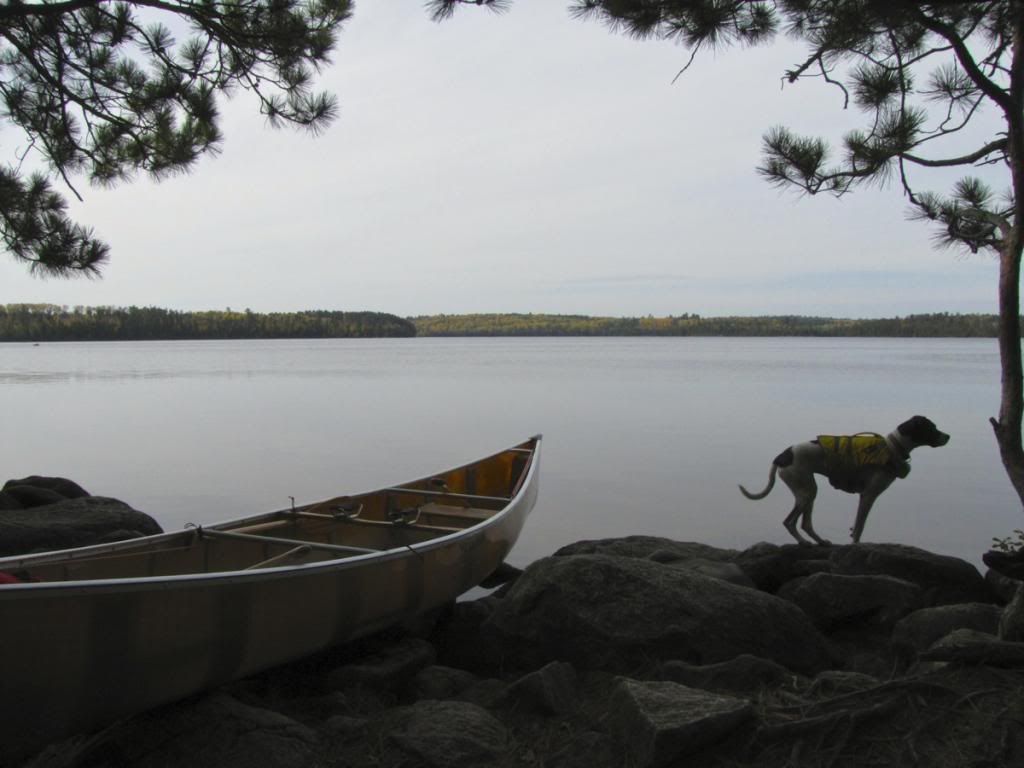
Oyster Lake immediately impressed David and me with its wild beauty, highlighted by the colorful fall foliage. Unfortunately, we didn't manage to take any photos that truly captured the spirit of this lake. But it will definitely be a destination on a future trip.
We decided to savor the lake by paddling around its circumference next to shore. As we loaded up the canoe, the sun burned through the haze, and it was warm enough, with no breeze, to paddle with our shirts off. Since we were planning to follow the shoreline, we figured we could dispense with PFDs for the moment too.
We set off northward, luxuriating in a warm shirtless paddle in early October. Not far from the portage, we passed an occupied campsite, though no one appeared to be home. As we tucked into the far northeastern bay of Oyster, a light breeze rustled the leaves on shore, adding to the magic of our Indian summer paddle.
But then, as we began arcing westward along the northern shore, that light breeze began to gain force. Almost out of nowhere, it seemed, we were soon buffeted by powerful wind-blown waves that had plenty of time to gain force as they traveled the entire breadth of Oyster Lake before pummeling us from the side. The warmth of the air vanished when it was blown across the surface of the October-cold lake water. Suddenly, shirts - and PFDs! - seemed like a really good idea. But with the wind and waves, we couldn't stop paddling long enough to put them back on.
On top of that, the northern shoreline was steep and rocky, with no place to land. And the shore was exposed to the full brunt of the wind and waves all the way to the end of the long point that juts south into Oyster. But maybe, just ahead, we could find refuge at the north end of the point, where there was an isthmus with a campsite. I had been told before the trip that you can access this site from either side of the point. So if we could land there, we could lift the canoe over the isthmus to the other side of the point, where we should be sheltered from the wind.
The takeout at the isthmus was rocky and lashed by waves, but we were able to unload quickly and pull the canoe up on shore. Piwi bounded ahead to check out the campsite, and then immediately started barking. Going to investigate, I found out why Piwi was excited - there were two men sitting in a canoe at the landing on the other - leeward - side of the point.
These were the guys who were camped at the occupied site we had seen just north of the portage. Like us, they were enjoying a peaceful paddle when the autumn wind suddenly blew up. I invited them to share the isthmus campsite with us for a break, but they were going to head back to their camp for lunch instead.
We decided to take our own lunch break at the isthmus. While we were there, we tried to take a couple pictures of the water conditions. As always seems to happen, the photos look a lot calmer than it felt when we were out paddling. Here's the view looking out from the rocks where we landed -
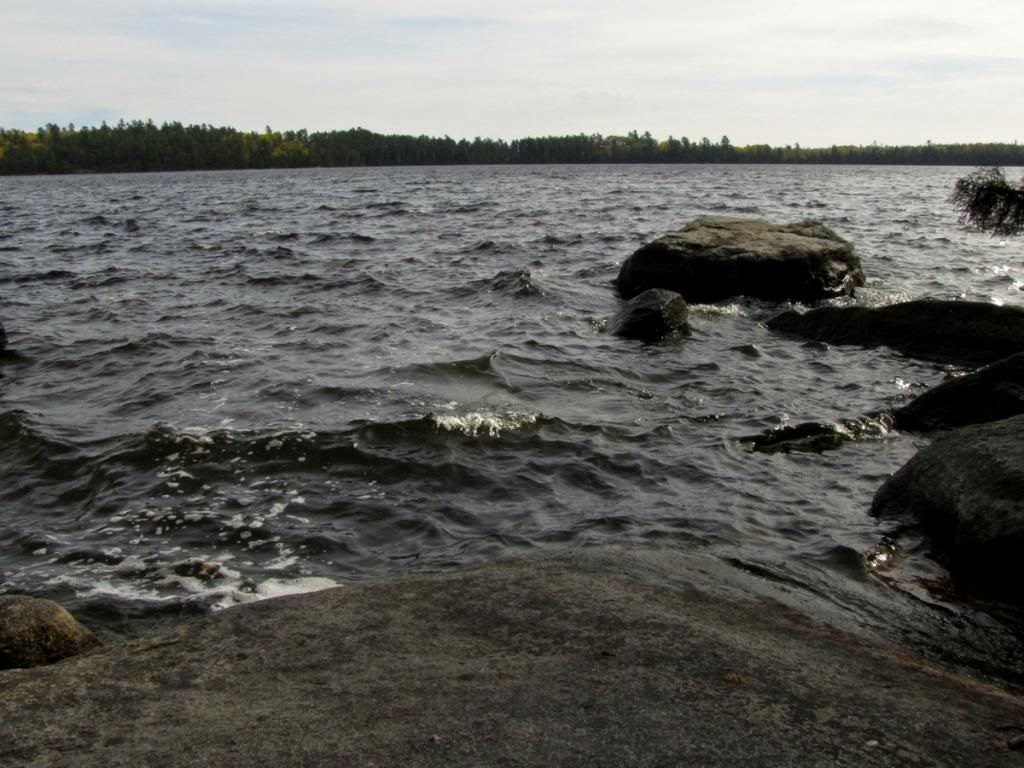
Another shot from the same place -
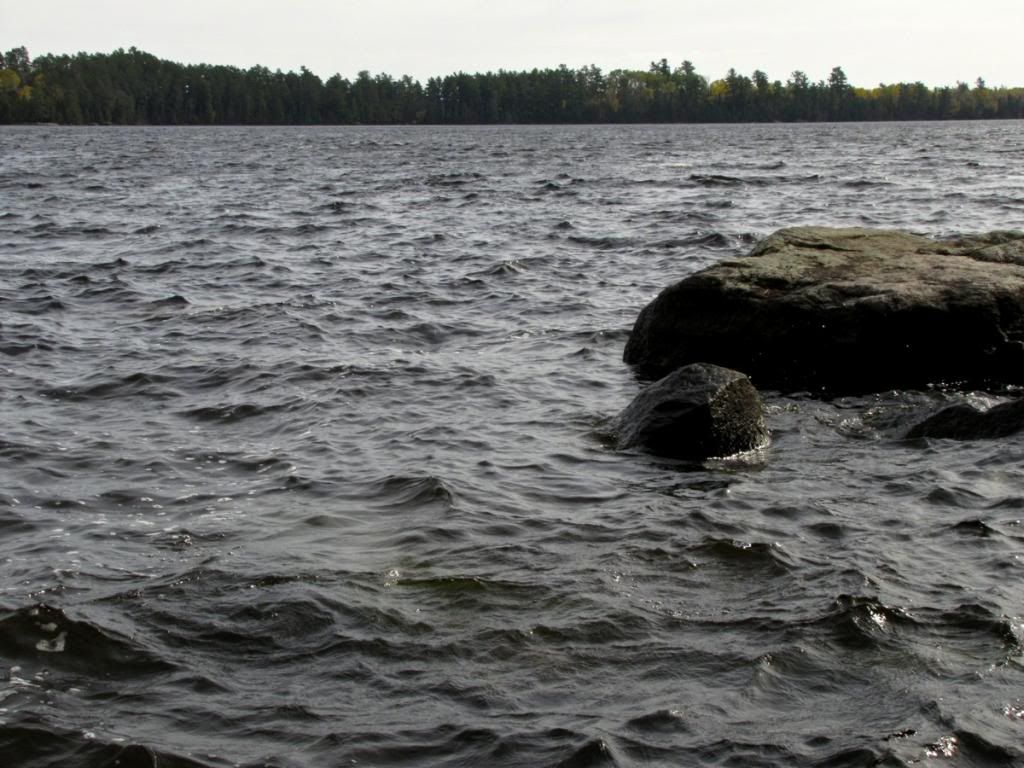
And here's the relative calm on the lee side of the point, where the guys were in their canoe when we arrived -

David during lunch -

Someone had left a rubber rat sitting at the site - Piwi though it was pretty suspicious -

After lunch, we put the canoe in on the sheltered side of the point and paddled south to complete our circuit of the lake. By the time we got to the end of the point and crossed back into the main basin, the wind seemed to have diminished. In addition, since it was blowing from the south, we were not as exposed as we had been on the north side of the lake. Despite the calm, we kept our shirts and PFDs on for the return trip.
Having circled the lake, we were ready to head back to camp. We retraced our route over the Oyster River and associated portages, pausing to gather a bunch firewood at the Lake Agnes end of the second portage. There was still a bit of a south wind blowing across Agnes, so on our paddle back to camp, I steered the canoe in a southerly arc to shorten the distance crossing open water and stay closer to the leeward shore.
Back at our site, I spent some time sawing, breaking, and sorting the wood so we would be all set for a long evening around the fire, with plenty left over for the next campers (possibly next spring?) -
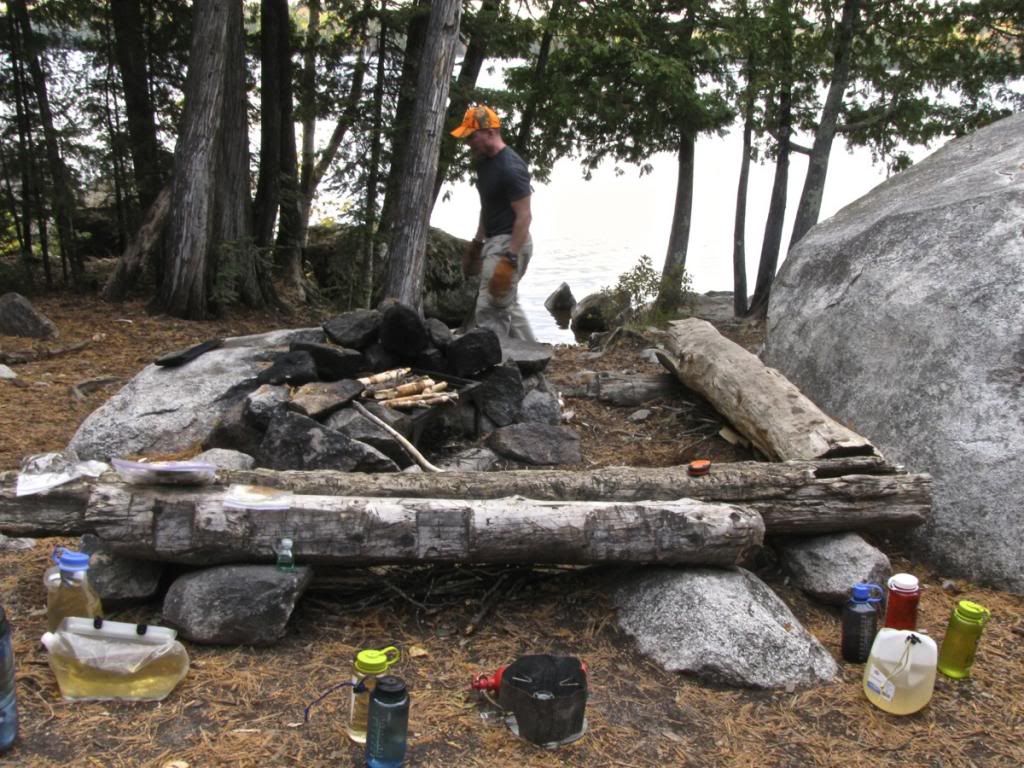
Piwi decided it was a good time for a snooze -

David took a few pictures around camp. We had a good pad for our tent. With the warm weather, we slept with the fly off the tent, though we kept it rolled up and ready at the head of the tent, and put it up when we left camp -
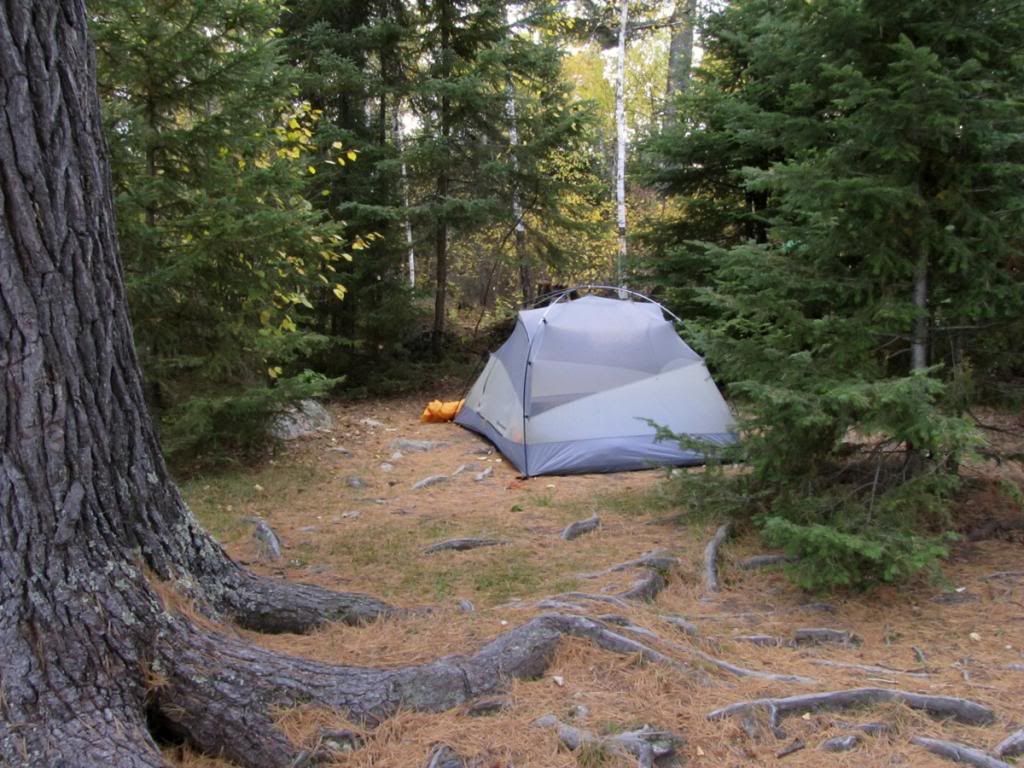
Grassy back bay -
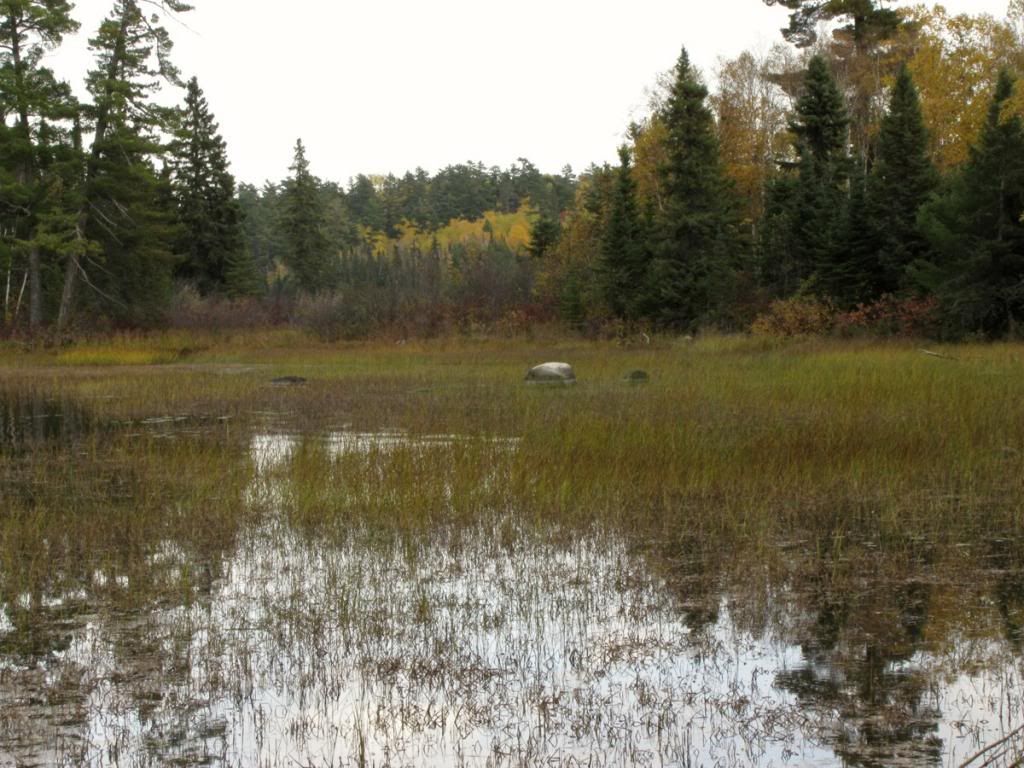
Abstract -
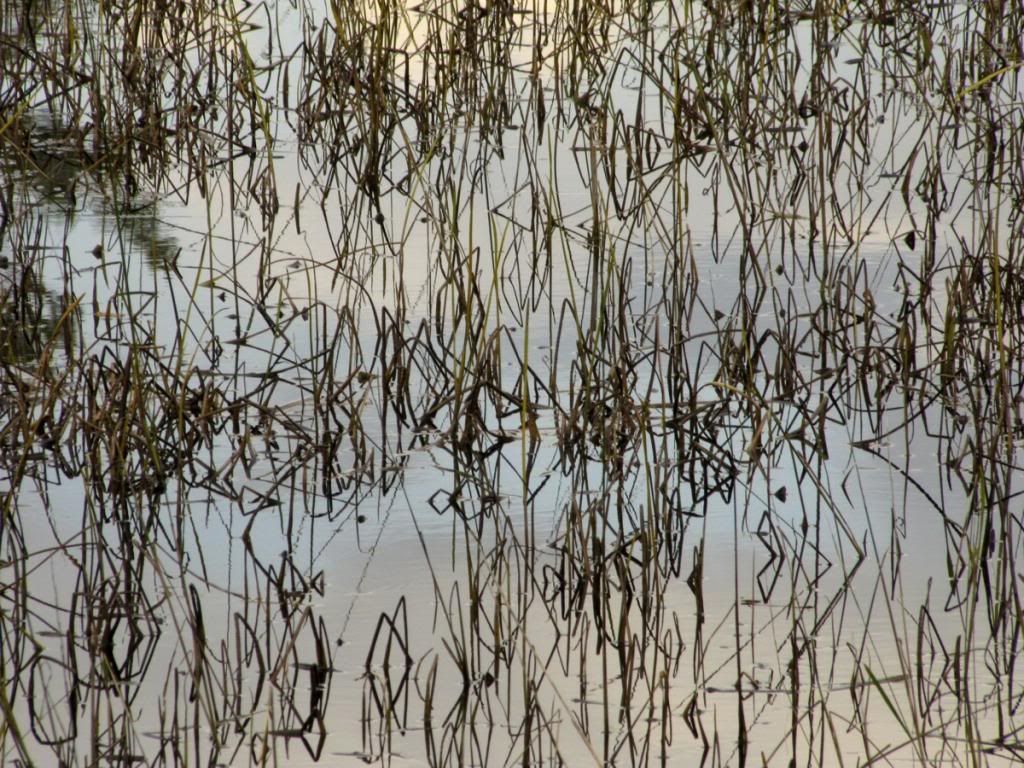
Looking westward -

As the sun was setting, we heard gunfire coming from somewhere to the south. I'm no firearms expert, but it seemed like the shooting could not be further away then the closest portage on the Nina Moose River. We thought someone might be grouse hunting on the portage, or possibly duck hunting on the river. But since no one else seemed to be camped on Lake Agnes, whoever was shooting would have some wilderness travel ahead of them after dark. Perhaps someone was camped up on Nina Moose Lake. Even then, there was a good stretch of river and another portage between them and their camp.
A little later, as the sky darkened, a little rain fell from the scattered clouds to our west -

We felt a sprinkle as well around the time we were lighting our campfire. We pulled the fly up over the tent, then enjoyed some Maker's Mark by the fire, with just a hint of rain falling early on. By the time we doused the fire and were ready to crawl into the tent, the sky was mostly clear again, so we took the fly back down and enjoyed another night with the stars overhead.
Distance traveled on Day 3: 10 miles.

 Donate - BWCA.com
Donate - BWCA.com